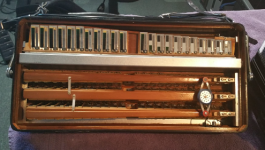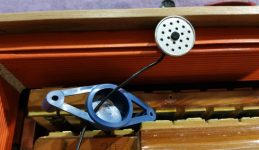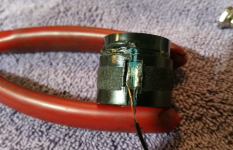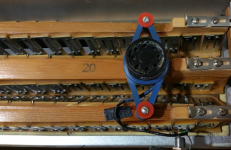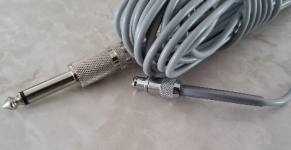Not sure why you would specifically say Limex mics? Their systems are normally touted as being one of the best (albeit expensive so not popular)? 10 treble mics and 3 bass mics is what I have in my system.Agreed, this would be true at any possible listening position. But if you were an ant and could place yourself right next to a pallet (where my microphones had been placed), it would sound very loud. Some microphones might distort well below 120 dB. I suspect Limex used inexpensive mic capsules, which were probably not designed for very high SPLs.
Last month had you asked me about Limex mics I would say that I am clueless, but I've just had a chance to play with the Limex mics in my Beltuna, and I have a couple personal observations:
- Without any EQing, they sound REALLY good (meaning natural and super flat frequency response when mic EQs are disabled and they do have a - or + 15db gains in low-mid-high controls integrated if desired. For my recording they were set to "0" and I EQ'ed very lightly in post).
- From Limex, the 3 bass mics are tuned from the factory to be slightly more sensitive than the 10 treble mics from the factory, but then again they are deeper inside the bass side of the box and more separated from outside sounds.
- How sensitive are the Limex mics? Sensitive to peg my meters of my Mackie mixer to 0db at the 34% level in the mic settings on the accordion and the gain on my mackie set to 50%. That is also sensitive enough that I can record the music perfectly and **still** listen to the backing tracks over the speakers of my audio setup 5-6 feet away clearly enough that I can play along.
- No acoustic accordion in the world can make a note loud enough that's close to overloading any electret mic, I don't care if you glue them to the reeds directly... lol
Now, if you want to overload the mics, set all mic volumes to 128 (maximum) then stand facing in front of a 3,000 watt woofer at full volume and wait for the feedback and the coming hearing loss... lol
BTW, speaking of feedback, Limex has an ingenious system for helping reduce/kill feedback in situations where other systems may easily induce unwanted feedback... the MIDI is used as a sensor to act like an ON/OFF switch for any treble or bass mics, so you could be standing in front of a speaker and have ZERO feedback, but still have functional mics the moment you press any note and the MIDI tells the system that the key or button is pressed and then turned off the moment they are released... very interesting!
Last edited:


